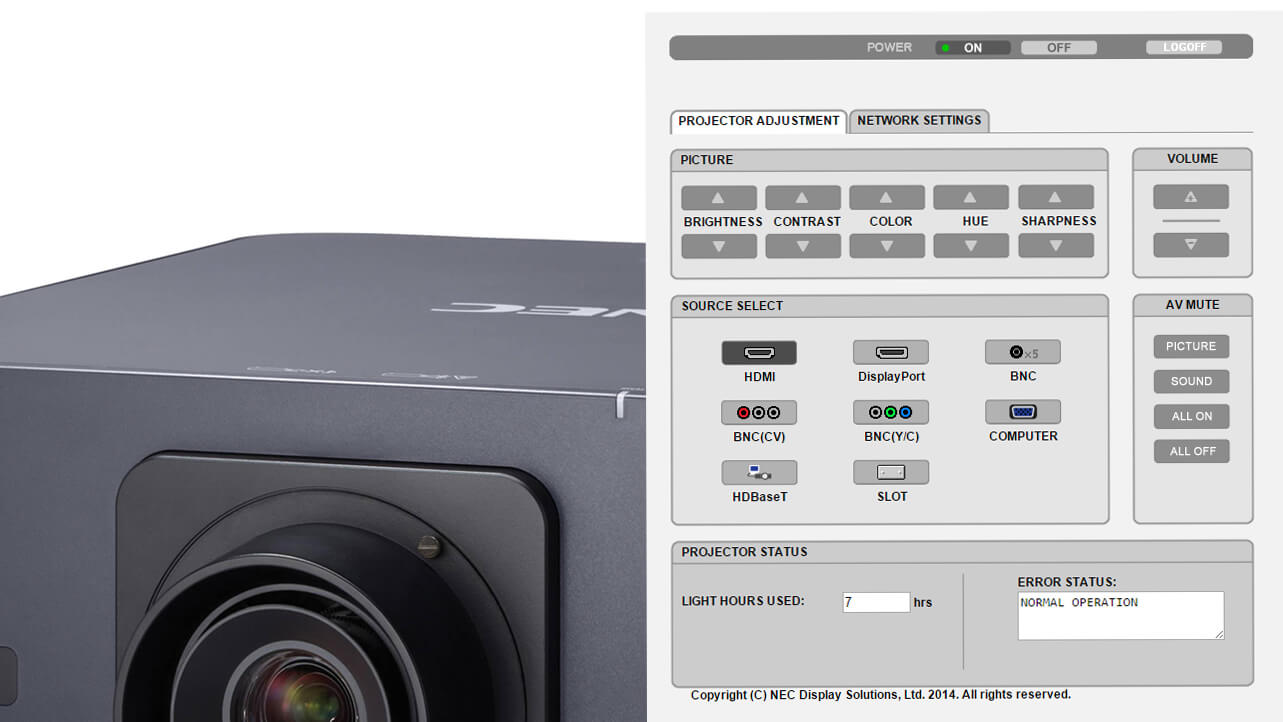Networked Projectors: How Far Have We Come?

- Take a good close look at your school’s projectors and large format displays – old and new – and you’re likely to find a startling trend. Most, if not all, of the newer devices have RJ-45 networking ports built in while they become more and more of a rarity with older devices.
- In a nutshell, it shows one of the most important areas of evolution for college projectors and displays over the years. In a real sense, they have gone from disconnected devices to ones that live on the school’s network.
- The pay-off of this small change is huge. From early 1-, 10- and 100-megabit per second networks to today’s 1- and 10-gigabit per second networks, this one change doesn’t add appreciably to the cost of the projectors or displays. On the other hand, it much easier to monitor, control and enhance a university’s projectors while offering a new path for video.
- You can keep an eye on every networked projector and display from anywhere on the network via its Ethernet connection. While you can use third party software, it’s generally as easy as typing the projector’s IP address into a Web browser. As is the case with NEC’s PX602 projector, a Web page pops up that shows the projector’s current settings and connections.
- In addition to seeing all the inputs, including its OPS slot, the one being used is highlighted. The page also shows if there’re any errors and how many hours the projector has on its clock, valuable information for estimating when its filter need cleaning or its lamp needs changing.
- A big step forward for IT folks is the ability to interact and make changes to the projector’s settings without leaving the office. The big one is that you can turn the projector on (at the start of the day) and off (at the end of classes) with the click of a mouse or tap of your finger on a tablet screen.
- Although it’s still not widely used just yet, the bigger impact could be using the network to deliver digital video to a projector or display via its RJ-45 port. For simple things like signage and messaging boards showing the day’s cafeteria menu or after school activities, its simple and straight forward.
- If you want to use the HDBaseT standard to move HD or 4K video, it becomes more involved than merely plugging the projector in. That’s because this requires special hardware, like high-speed video switches, using top-quality cabling and adding quality of service prioritization to get the most out of this technology.
- It’s clear that we’ve come a long way from the era of disconnected projectors and displays to a school full of linked projectors and displays that can be controlled from anywhere on campus. But, all this involves Cat-6 cables hidden in the school’s walls.
- Yes, networked projectors and displays have come a long way. There’s still much left to do because most projector and display makers continue to use an optional USB adapter to connect over a WiFi network if they make any provision for wireless data at all.
- If we’re to take the next step and get even more out of a school’s connected AV gear, they need to be able to take advantage of the latest high-speed 802.11ac wireless networks. That way, they’ll be able to connect anywhere the wireless LAN extends, not just where there happens to be an RJ-45 outlet.
avtechnology Newsletter
A daily selection of features, industry news, and analysis for tech managers. Sign up below.
TOPICS
MORE FROM AVTECHNOLOGY
